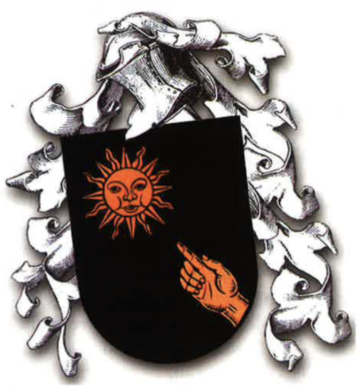The Brady family name derives from the Gaelic McBradaigh which was originally anglicized as McBrady, but the “Mc” is very seldom used in modern times. The vast majority of this power clan of Breffny, now the County of Cavan, come from Ulster. A smaller group of Bradys (formally O’Brady) come from County Clare.
The Bradys were a gentler sort and their prominent kinsmen have distinguished themselves in many different fields. Nevertheless there were a significant number of military men. The American Revolutionary Army listed 127 Bradys, including Captain John Brady of the 12th Regiment Pennsylvania Line, Lieutenant Christopher Brady of Stephen’s Virginia Rifle Regiment and Surgeon David Brady of the Georgia Continental Brigade. Thomas Brady (1752-1827), born in County Cavan, was a Field Marshall in the Austrian Imperial Army.
In Ireland there have been several prominent Brady poets, from Fiachra McBrady, and Philip McBrady (? – 1719) to the current popular Irish songwriter Paul Brady.
The Bradys can claim one of America’s best examples of the “self-made man.” Anthony Nicholas Brady (1843-1913) was born in France to Irish parents and was brought to the U.S. as a child. An entrepreneur from an early age, he opened a tea store in Albany, New York at the age of 19, and later opened further stores in Troy and New York city. On a small scale, this was perhaps the first example of a chain store. Having developed his tea business, he expanded his interests to building materials, then to supplying public works and then to actually securing public building contracts all over New York. Quickly realizing the great business opportunities offered by the developing public transport systems of the state he became one of the organizers of the Metropolitan Traction Company and was a most influential force in the development of the New York subway system. He also had part ownership of the street railways of Washington and Philadelphia. He was a natural entrepreneur, with a eye for opportunity, his estate was valued at $50 million on his death.
Perhaps the best-known of the American Bradys is the Civil War photographer Matthew Brady (1823-1896). He was born in New York (some dispute this and claim that he was born in County Cork, emigrating with his parents as a small child). Through his connection with Samuel Morse he became interested in the daguerreotype which was the earliest form of photography. Through experimentation he developed a commercial system and set himself up as a portrait photographer in New York City. His business became a huge success and thousands patronized his studio at Broadway and Fulton. His portraits, and the improvements he made to the Daguerre process, won him many awards in the U.S. and Europe. In 1855 he changed to the wet photographic process and became even more prosperous. He is best remembered because of the photographs he took during the Civil War. At the outset of the war he persuaded Lincoln and the army to allow him and his assistants to accompany various units of the army during the course of the war. He and his assistants took some 3,500 photographs often at considerable risk to themselves. The bulk of these were later purchased by the American government. These photographs guaranteed Matthew Brady a place in photographic, if not American, history, but the war ruined him financially. He never regained his status as a portrait photographer and he died in poor circumstances.
Another notable was Cyrus Townsend Brady (1861-1920) who made several unusual career changes in his short life. Born in Allegheny, Pennsylvania, he graduated from the U.S. Naval Academy in 1883 but instead of taking up a career at sea he opted for work on the railways. Soon after he decided to become an Episcopalian clergyman. His postings in that capacity included a period as chaplain in the Spanish-American War, and long periods as a traveling preacher in the midwest. Borrowing from his long and extensive experience he turned his hand to writing popular fiction and in the next 20 years he turned out 70 volumes that were highly successful, if not critically acclaimed for their literary content, and several became the basis of early movies.
On the political front, John Green Brady, (1848-1918) was born in New York and ran away from home at the age of eight. He became a Presbyterian clergyman and was sent to Alaska as a missionary. He disagreed with his church, however, on the best means of converting Native Americans and left the ministry, but stayed in Alaska to become a trader. He was an active promoter of Alaska and in 1897 he was appointed governor by McKinley. In more recent times, there is Jim Brady, the government press secretary to Ronald Reagan who was shot, and permanently handicapped, during an attempt on Reagan’s life in 1981. He has since become a campaigner for gun control.
Editor’s Note: This article was originally published in the February / March 1999 issue of Irish America.


Leave a Reply